Table of contents
Black pepper ( Piper nigrum ), which originally comes from India, has a mild to fiery spiciness. Since it is usually blanched, black pepper is no longer available raw , but is available in organic quality.
Use in the kitchen
Black pepper, also known as real pepper or pepper, is used to flavor numerous dishes. Real pepper is very versatile: it not only seasons sauces, soups , stews , casseroles and cooked vegetables, but also salads , raw vegetables and even fruits , cakes or other desserts. Whole peppercorns often add a flavor to gherkins or other pickled vegetables.
How hot is pepper? The taste of pepper is hot, burningly spicy and warm. Depending on when it is harvested and processed, the pepper berries are sold as green, black, red or white pepper. Accordingly, there are differences in aroma and degree of spiciness.
In general, pepper should not be cooked for too long, otherwise it will lose its characteristic aroma. Frying at too high a temperature will result in a bitter aftertaste, as with paprika . If you want to enjoy the full aroma of pepper, use whole peppercorns. Depending on the preparation, you can add the whole peppercorns (all types) and then remove them again or serve them with the dish - or grind them freshly with a pepper mill or a salt mill with a ceramic grinder (black and white pepper). This means that the ground pepper components are not exposed to oxidative processes of atmospheric oxygen for as long as the powders available in stores, and they retain their volatile aromas.
Pepper is a component of many spice mixtures and traditional national dishes around the world. In Thailand in particular, fresh green peppercorns are used to flavor stir-fried dishes and curries. The Indian mixture Garam Masala contains pepper, as does Ras el-Hanout, a famous spice mixture from Moroccan cuisine, the Yemeni paste S-chug (Zhoug) or the French Quatre-épices. 3
In Sri Lanka and Georgia, pepper is an extremely popular table spice that is only used when eating and in large quantities on certain specialties. The French cook it with vinegar in béarnaise sauce. Indian milk tea, Italian panforte and some types of gingerbread (alternative name: gingerbread) also owe their speciality to pepper. 1
What types of pepper are there?
Green pepper tastes fresh, herbal and slightly spicy. It is added whole or crushed to sauces, soups, curries or vinaigrettes shortly before the end of cooking.
Black pepper is hotter and often has a eucalyptus-like or camphor-like aroma. It is used to season darker dishes, soups made from legumes, vegetable dishes and fruits, e.g. strawberries , figs or oranges .
Red pepper (sometimes also called orange pepper) is similar in aroma and taste to black pepper, but has a certain sweetness in addition to the spiciness. These berries go well with fruity dishes (with mango , citrus fruits, strawberries, coconut ) or dishes with nuts, pumpkins, carrots or lentils .
White pepper has a slightly cedar-like taste. Which is hotter, white or black pepper? White peppercorns are the hottest, but contain fewer aromatic substances (oil, resin) than black peppercorns. 1,2 As a result, white pepper goes well with light dishes and sauces, in salads, with cauliflower and potato dishes. One or two white peppercorns give preserved peaches and mirabelle plums a special taste.
Vegan recipe for garam masala with black pepper
Garam masala can be mixed together using the following ingredients: 1 tbsp cumin seeds , ½ - 1 tsp coriander seeds , 1 tsp black pepper (freshly ground in a mill), 1 ½ tsp ground cardamom pods (remove seeds before grinding), 1 tsp cinnamon (you can also use part of a cinnamon stick), 5-6 cloves and ½ tsp nutmeg (ground). Put all the ingredients in an electric coffee grinder or a high-performance blender and grind them into a fine powder. This amount makes a spice mixture with a filling volume of ≈ 100 ml (12-15 portions), which will keep for several months if stored properly (dark, cool and protected from moisture).
Vegan recipes with black pepper can be found under the note: " Recipes that have the most of this ingredient ".
| Not only vegans or vegetarians should read this: Vegans often eat unhealthily. Avoidable nutritional errors . |
Purchasing - Storage
Black pepper is available in various forms: as whole grains (dried or pickled) or coarsely to finely ground (powder). Black and white pepper can be bought dried, either whole or ground. Green and red pepper are best preserved in salty or sour brine. Green pepper is also available as dried berries. Red, dried pepper is a rarity. Caution: Red pepper should not be confused with pink pepper! See possible confusions.
Pepper is available in supermarkets such as Coop , Migros , Denner , Volg , Spar , Billa , Aldi , Lidl , Rewe , Edeka , Hofer etc. Special varieties as well as pepper in organic quality can be purchased in organic shops, health food stores, drugstores, in organic supermarkets such as Denn's Biomarkt and Alnatura or via online retailers.
The availability of black pepper varies depending on the size of the store, catchment area, etc. Our recorded food prices for the DA-CH countries can be found above under the ingredient image - and by clicking you can see their development at various suppliers.
Storage tips
Pepper is ideally stored in a dry, cool place protected from light. If packed airtight, the spice will last for two to three years. The shelf life of ground pepper is limited to around 4-6 months. If the spice cabinet is above or right next to the stove, heat and moisture can affect the aroma of the spices.
Ingredients - Nutritional values - Calories
Here we realistically show you the ingredients of spices and herbs per 1 g (instead of per 100 g as usual).
Black pepper contains 2.5 kcal of energy per 1 g. It contains hardly any fat, protein or fiber and only 0.6 g of carbohydrates per 1 g. 6
Manganese , vitamin K and iron are the most important essential nutrients that green pepper contains. However, because of the small amount consumed, they and the macronutrients do not contribute significantly to meeting the respective daily requirement. Far more important for the health value are the secondary plant substances in this ingredient, which can only have an effect in trace amounts. Although all herbs and spices have many health-promoting ingredients, we deliberately avoid the insubstantial buzzword superfood here. 6
The complete ingredients of black pepper, the coverage of the daily requirement and comparison values with other ingredients can be found in our nutrient tables. In the article Nutrients explained you will get a detailed insight into the topic.
Health effects
Is black pepper healthy? Pepper is considered to stimulate the appetite and digestion because it stimulates the secretion of saliva and gastric juices and promotes the release of digestive enzymes when consumed. Piperine stimulates the taste buds and causes heat impulses. Research results suggest that piperine increases the bioavailability of other substances (eg turmeric 9 or medications, etc.). 7,10 For this reason, pepper extract is becoming increasingly popular as a dietary supplement in bodybuilding and strength training.
Pepper also has a wide range of health-promoting effects due to its richness in secondary plant substances such as phenols, flavonoids, amides, steroids, lignans, neolignans, terpenes, chalcones and, in particular, the alkaloid piperine. 7,8 Clinical studies on cells, animals and humans have demonstrated antimicrobial, antioxidant and therapeutic effects against various types of cancer, including breast cancer, skin cancer, colon cancer and ovarian cancer. 11,12,13 Pepper has also been shown to have antidiabetic and hypolipidemic properties, as well as anti-inflammatory, analgesic, hepatoprotective, antidiarrheal, antidepressant, anticonvulsant and neuroprotective effects. 10,11
By increasing the permeability of cell membranes, the piperine contained in pepper intensifies the absorption and effectiveness of medications. 10 In laboratory studies, this effect was used to increase the elimination of resistant cancer cells using a combination therapy of pepper and cancer drugs. This effect was observed in a combination treatment against cells from breast cancer, cervical cancer and prostate cancer. However, further human studies are needed to test the results outside the laboratory. 10,14,15
The essential oil of pepper also contains monoterpenes such as pinene, 3-carene, terpinene, terpinolene and limonene, as well as sesquiterpenes and oxidized terpenes such as terpinen-4-ol. Black and green pepper contain up to 4.8% essential oil (pepper oil), white pepper slightly less (about 2.5%). The pepper oil is most concentrated in the mesocarp, where the pepper resins are also located. The mesocarp is the middle layer (epidermis) of the fruit shell (pericarp) with its three layers around the seed. The hot pepper taste is due to piperine. The highest concentration of piperine is in the endocarp, the white, inner layer around the seed. 2
Dangers - Intolerances - Side effects
When consumed in large quantities, pepper can cause heartburn like chili . The secondary plant substances and essential oils in pepper can also cause allergic reactions in some people, which manifest themselves through typical symptoms such as gastrointestinal complaints, respiratory irritation, itching and skin rashes. There are also possible cross-allergies with, for example, mugwort. However, a diagnosed pepper allergy does not necessarily mean that every type of pepper causes problems. In general, however, you should avoid foods seasoned with pepper. 16
The alkaloid piperine in pepper can more than double the absorption of other medications. 17 Although this may be useful in many medical therapies, caution should be used to avoid possible increased effects when pepper is consumed at the same time as medications.
Use as a medicinal plant
In ancient times and in the Middle Ages, pepper was used in many different ways as a medicinal plant, for example for fever, colds, digestive problems, coughs and chest pains. In the 18th century, it was considered almost a universal remedy in Europe. 18 Today, pepper is rarely used as a medicinal plant in Europe - except in tonics. 17 Although research suggests that pepper has antioxidant, antimicrobial, anti-inflammatory, gastroprotective and antidepressant effects, there are still no meaningful results from clinical studies. 11,19
Folk medicine - natural medicine
In folk medicine, pepper is considered a remedy for fever, stomach problems and sore throats. 20 In India, black pepper is used for menstrual problems, ear, nose and throat problems and for diseases of the gastrointestinal tract in livestock. 19
Ecological footprint - animal welfare
The ecological footprint of pepper varies depending on the cultivation method, use of pesticides and fertilizers, the natural conditions of the country of cultivation, and the means of transport and distances in international trade. Different countries of origin and production conditions have a significant impact on the environmental impact of pepper cultivation, which is why it is advisable to give preference to products from organic farming and from officially certified labels such as the Sustainable Spices Initiative ( SSI ), the National Sustainable Spice Programme India ( NSSP ), Fairtrade or the EU organic seal. These guarantee certain sustainability and social standards. 21
The global average CO 2 footprint of pepper is 4.69 kg CO 2 eq/kg (2021: 4.3 kg CO 2 eq/kg), 22 while the average water footprint is 7611 litres of water per kilogram, significantly lower than other spices such as cinnamon (15,526 litres/kg), cardamom (34,319 litres/kg) or cloves (61,205 litres/kg). 23
Due to its climbing nature, pepper is often grown in combination with various "support trees" on which the pepper plant grows. Wooden stakes are also used to support the plants. The environmental impact of pepper cultivation depends on the cultivation method chosen and the type of support tree. Growing pepper with trees is more cost-effective, productive and sustainable in the long term compared to using stakes, as the trees can be used for other purposes. Support trees also have the potential to bind CO 2 and increase soil fertility through closed nutrient cycles. The improved CO 2 balance and soil quality reduce the ecological footprint of this cultivation method. 24
Worldwide occurrence - cultivation
The genus Piper is very diverse and has a pantropical distribution. All pepper species require a warm climate, love moist, humus-rich soil and cannot tolerate frost.
The origin of black pepper ( Piper nigrum ) is thought to be in the foothills of the Himalayas, especially in Assam and Burma. The first domestication attempts probably took place on the Malabar coast in southern India. 25 Piper wightii and P. galeatum are thought to be the most likely ancestors of cultivated pepper. 4 Towards the end of the 20th century, Thailand, China and Sri Lanka also began to establish new plantations. For a long time, the most important growing areas were in India and Indonesia. Since the turn of the millennium, Vietnam has become the main exporter of pepper and Brazil is in the running from America.
The pepper trade distinguishes varieties according to their region of origin. Malabar pepper and Tellicherry come from India, Sarawak (island Malaysia) and Lampong pepper (Sumatra/Indonesia) from Southeast Asia. If the pepper comes from newer growing areas, it is usually named after a main trading center (Bangkok, Saigon). Muntok is the name of the white pepper from Indonesia southeast of Sumatra, while Sarawak Cream Label is a particularly light white pepper from Sarawak. Brazilian pepper (black, white and green) is named Belém after its export port. 1
Cultivation - Harvest
Cultivation, sowing and caring for a pepper plant ( Piper nigrum ) are not easy. You can buy the right seeds in a garden center or online. Commercially available dried peppercorns are not suitable because they are pre-treated (blanched) and partly fermented (black pepper). This means they are no longer able to germinate. But even purchased seeds germinate quite unreliably and need a tropical climate (greenhouse) and a trellis. 26,27
Industrial production
The pepper available in stores is a processed product and its production requires several steps. Depending on the time of harvest and treatment, the peppercorns have different colors:
Green peppercorns are unripe, early harvested peppercorns. The peppercorns are placed in salty or acidic brine to prevent fermentation and to preserve the green color. Alternatives to pickling are rapid drying at high temperatures, freeze drying or drying in a vacuum. To obtain white peppercorns , the red peppercorns are harvested when fully ripe. They are then soaked in slowly running water for about 1-2 weeks. This causes the outer shell of the pericarp to disintegrate and it can be removed mechanically. The white peppercorns are then ready to dry. The white ones are hotter than the black ones. Red peppercorns are the ripe, unpeeled fruits. They can be found pickled or, rarely, dried. 1,2
To produce black pepper, the berries are picked just before they are fully ripe, when they are green or slightly yellow-orange in color. The post-harvest processing steps for black pepper include threshing, blanching, drying, cleaning, sorting and packaging/further processing: 36
- Before drying, the threshed berries are blanched in boiling water for about a minute to speed up the browning and drying process. In traditional drying, the berries are spread out on PVC foil or bamboo mats and left to dry in the sun. Mechanical dryers are also used to produce black pepper: These include solar dryers or dryers fired with wood and agricultural waste. After drying, the berries have a maximum moisture content of 10%.
- The dried berries are cleaned and sorted to remove foreign matter such as thorns, stones or soil particles. This is done by hand or with the help of special machines.
- The black peppercorns can then either be packaged and sold or subjected to further processing steps.
- To make black pepper powder, peppercorns are ground using mills or rollers. Another method of producing ground pepper is grinding using liquid nitrogen. During this process, the temperature of the pepper remains below 100 °C, which prevents the oxidation of the pepper oil.
If you want to produce essential pepper oil, you grind the dried peppercorns into a coarse powder and distill it in a stainless steel distiller. 36
To obtain pepper oleoresin (pepper extract), aroma, flavor and spiciness are extracted from the grains using solvents such as ethanol or acetone. Oleoresin is used to flavor various foods, as a colorant, preservative and in the pharmaceutical industry. 36
In international trade, mainly whole peppercorns are sold. Most importing countries process the peppercorns themselves into powder or other pepper products. 35
Further information
Black pepper from the pepper tree ( Piper nigrum ) comes from the pepper family (Piperaceae). Pepper plants exist in 5 genera or around 3600 species. The pepper genus ( Piper ) includes between 1000 and 2000 different species such as betel pepper ( Piper betle ), cubeb pepper ( Piper cubeba ), long pepper ( Piper longum ) and black pepper ( Piper nigrum ).
Lemon pepper is a spice mixture made from crushed black peppercorns and either granulated lemon peel or dried lemon juice. However, commercially available lemon pepper usually contains additives such as salt, garlic and other ingredients. Therefore, it should be considered a spice salt and not a pepper mixture. Not to be confused with Indonesian lemon pepper, which is a variety of Sichuan pepper. 1,28
Black pepper is now the most used and traded spice in the world. In 2012, black and white pepper accounted for around 2 billion dollars, or about a quarter of the global trade value of spices. Nevertheless, the berries of the pepper tree have a much lower trade value than in ancient times and the Middle Ages. The warriors of Alexander the Great are said to have brought pepper to Europe around 400 BC. Before goods were transported by ship, pepper was transported overland from southwest India to Europe. It reached Rome by caravan and by sea through the Red Sea. The Romans valued it at its weight in gold. 29
Pepper was a luxury item, but also sought after because it helped food to last longer. Rich pepper traders were nicknamed pepper sacks and cities like Venice became very wealthy thanks to their monopoly in the spice trade. Even the voyages of Marco Polo and Christopher Columbus were based on the idea of finding suitable transport routes for precious spices. After the discovery of America, pepper lost importance as a commodity because the chili (hot pepper, genus Capsicum ) from there replaced it as the number one hot spice.
In the 18th and 19th centuries, critical voices were increasingly heard, rejecting foreign and expensive spices and also classifying the irritating effect of pepper as harmful to health. Because of the high price, many counterfeit spices were in circulation. In the course of the 20th century, its popularity increased again. 18
The name of the pepper is derived from the Sanskrit name for long pepper (pippali). From this come the Greek and Latin names, which first referred to long pepper and then increasingly to black pepper because the latter gained commercial importance. 1
"Go where the pepper grows!" With this saying, you wish the other person to go to a far away place so that you don't have to meet them again.
Found in the wild
Wild pepper grows as a liana in the Western Ghats (mountains in western India). 4 Until the 19th century, the forests were rich in wild and expansive pepper plants. As a result of deforestation, the populations declined sharply. Interest in the wild plants is increasing because they are probably more disease-resistant than the cultivated plants. However, attempts to graft cultivated pepper onto wild pepper have so far failed. 5
Possible confusion
Some spices that incorrectly have "pepper" in their name are often confused with real pepper ( Piper nigrum ). For example, pink pepper (also called Brazilian pepper or pink berry) does not belong to the pepper plant genus ( Piper ), but comes from either the Brazilian pepper tree ( Schinus terebinthifolius ) or the Peruvian pepper tree ( Schinus molle ). In mixtures of different (pepper) seeds, pink pepper often appears in combination with white, black and green berries. 30
Sichuan pepper ( Zanthoxylum ), also known as Japanese pepper or Chinese pepper, belongs to the rue family and is related to citrus plants. These seeds are not actually spicy, but cause a feeling of numbness on the lips and tongue. Together with star anise , cinnamon cassia (Chinese cinnamon), fennel seeds and cloves, it is an essential ingredient in Chinese five-spice powder. 28
Guinea pepper or grains of paradise ( Aframomum melegueta ) are capsule fruits of a ginger plant. In the Middle Ages, grains of paradise were a cheap and popular pepper substitute. 31
Allspice, Jamaica pepper or clove pepper ( Pimenta dioica or P. officinalis ) belongs to the myrtle family. Allspice contains the same essential oil as cloves, but is noticeably hotter. 32
Cayenne pepper ( Capsicum annuum ) is ground chili pepper or spice powder made from cayenne-like varieties sold as cayenne pepper. 33
Chasteberry ( Vitex agnus-castus ) is a plant species of the genus Vitex in the Verbenaceae family. In the Middle Ages it was used to season food and suppress sexual desire. Today it is an ingredient in preparations for treating menstrual problems. 34
Alternative Names
Important alternative names for black pepper are true pepper or simply pepper.
In English, pepper is pepper or black pepper.
Other uses
Due to its antimicrobial and antioxidant properties, both whole peppercorns and pepper essential oil have been used for centuries to preserve foods. 35
Pepper can also be used in agriculture for plant protection, where it acts as a natural fungicide and insecticide. The advantage of its use as a plant protection product is its low toxicity to mammals and the rapid degradation of the pepper substances in sunlight, which prevents any residual environmental pollution. The antimicrobial properties and insect-repellent effects of pepper are also used in humans, animals and in the home. 8,10
Bibliography - 33 Sources
| 1. | gernot-katzers-spice-pages.com/germ /Pipe_nig.htm |
| 2. | Rehm S, Espig G. Die Kulturpflanzen der Tropen und Subtropen. Stuttgart: Eugen Ulmer Verlag; 1976. |
| 3. | ernestopauli.ch /essen/gew%C3%BCrze /Pfeffer.htm |
| 4. | t-online.de/leben /essen-und-trinken /id_77103826/pfeffer-nicht-vor-dem-anbraten-fuenf-goldene-regeln-fuers-wuerzen.html |
| 5. | Wikipedia Ras el-Hanout. |
| 6. | Wikipedia Garam Masala. |
| 7. | Wikipedia S-chug (Sauce). |
| 8. | Wikipedia Französisch Quatre-épices. |
| 9. | Wikipedia Sauce béarnaise. |
| 10. | gernot-katzers-spice-pages.com/germ/Pipe_nig.html |
| 11. | Wikipedia Englisch Black Pepper. |
| 12. | deccanherald.com /content/365810 /meet-pepper-queen.html |
| 13. | gartenjournal.net/pfeffer-anbau |
| 14. | gartenjournal.net/pfeffer-samen |
| 15. | t-online.de/leben /essen-und-trinken /id_72318202/pfeffer-kaufen-und-richtig-lagern.html |
| 16. | Wikipedia Piperin. |
| 17. | Shoba, G. Joy, D. et al. Influence of piperine on the pharmacokinetics of curcumin in animals and human volunteers. Planta Medica. 1998;64 (4):353–356. doi:10.1055/s-2006-957450. |
| 18. | Wikipedia Bioenhancer. |
| 19. | deutsche-apotheker-zeitung.de/daz-az /2001/daz-51-2001/uid-5243 |
| 20. | awl.ch /heilpflanzen/piper _nigrum/pfeffer.htm |
| 21. | Butt MS. Pasha I. et al. Black pepper and health claims: a comprehensive treatise. Crit Rev Food Sci Nutr. 2013;53(9):875-86. doi: 10.1080 /10408398.2011.571799. |
| 22. | Takooree H. Aumeeruddy MZ. et al. A systematic review on black pepper (Piper nigrum L.): from folk uses to pharmacological applications. Crit Rev Food Sci Nutr. 2019 Feb 11:1-34. doi: 10.1080 /10408398.2019.1565489. |
| 23. | Pahlow AM. Das grosse Buch der Heilpflanzen. Gesund durch die Heilkräfte der Natur. Nikol Verlag: Hamburg. 2013. |
| 24. | Brücher H. Tropische Nutzpflanzen. Ursprung, Evolution und Domestikation. Springer Verlag: Berlin. 1977. |
| 25. | Wikipedia Pfeffer. |
| 26. | Wikipedia Szechuanpfeffer. |
| 27. | Wikipedia Paradieskörner. |
| 28. | Wikipedia Piment. |
| 29. | Wikipedia Cayennepfeffer. |
| 30. | Wikipedia Mönchspfeffer. |
| 31. | Wikipedia Zitronenpfeffer. |
| 32. | camws.org/sites/default /files/meeting2016 /106.GoldforPepper.pdf |
| 33. | USDA (United States Department of Agriculture). Nährstofftabellen. |

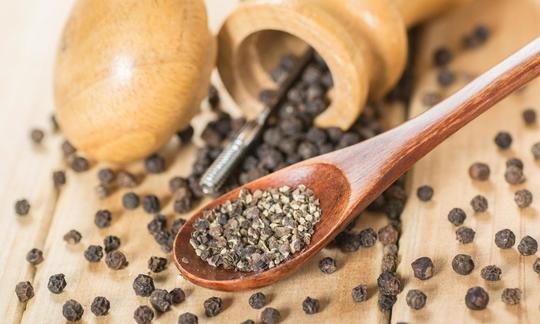

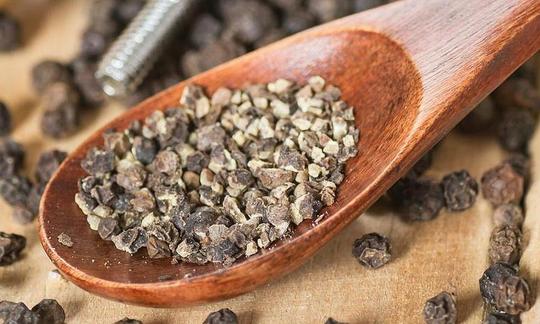

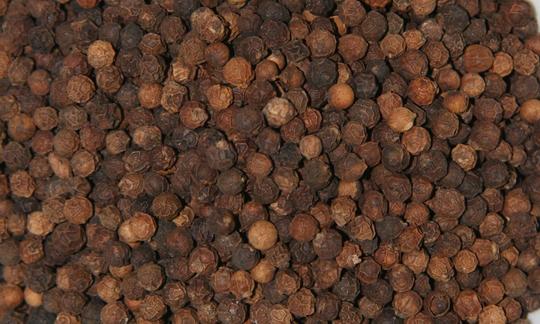

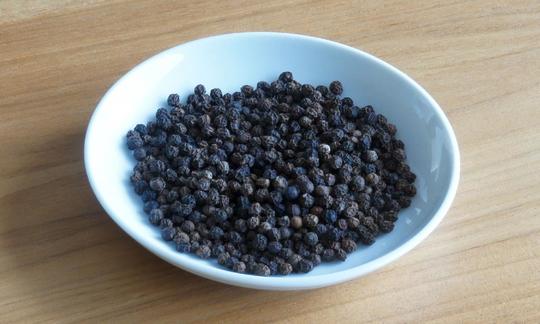

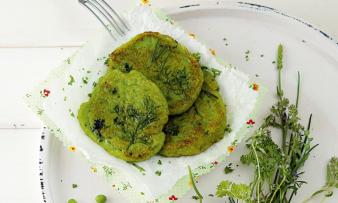

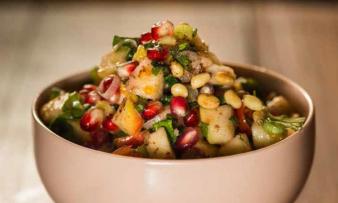





Comments